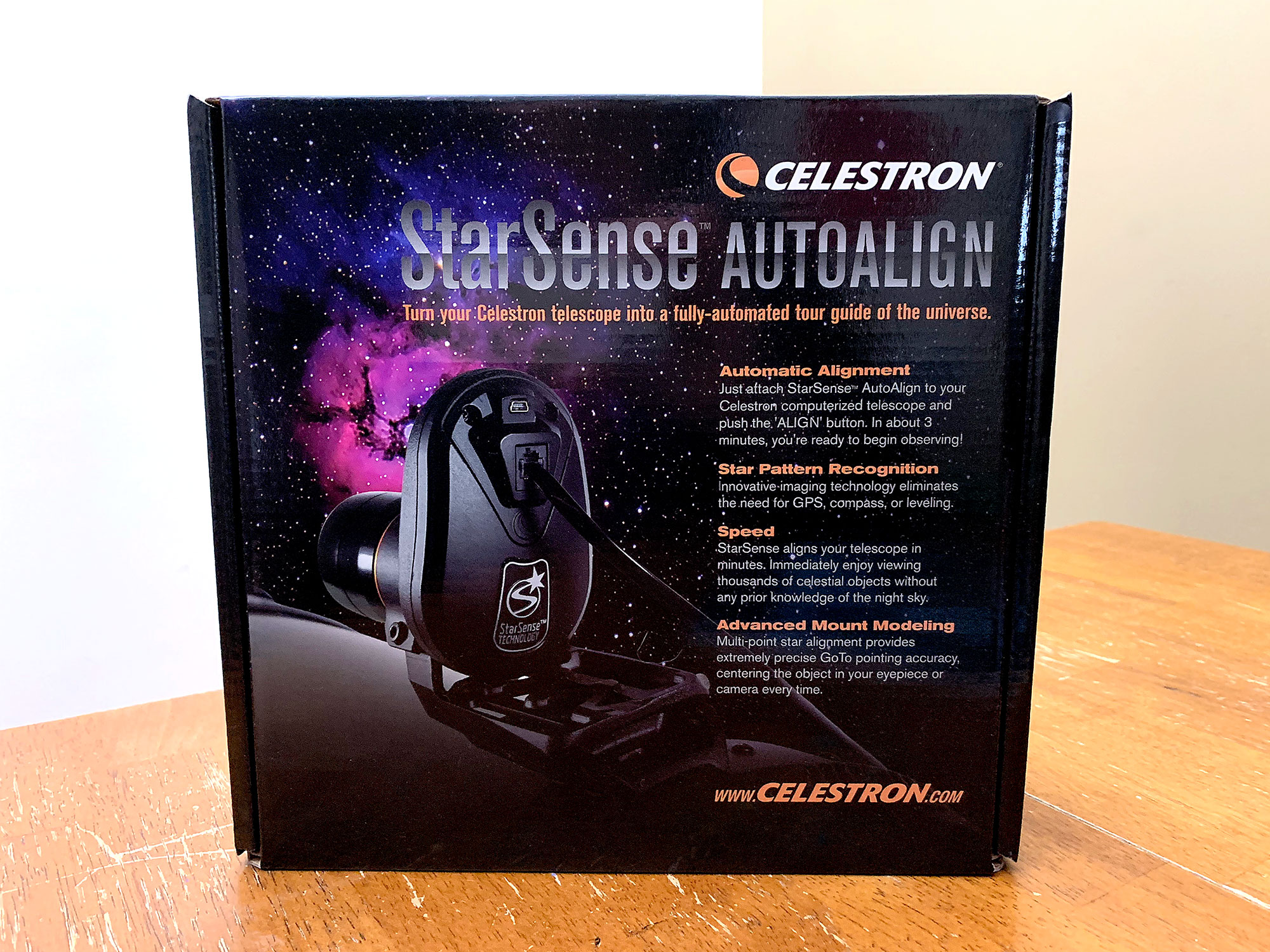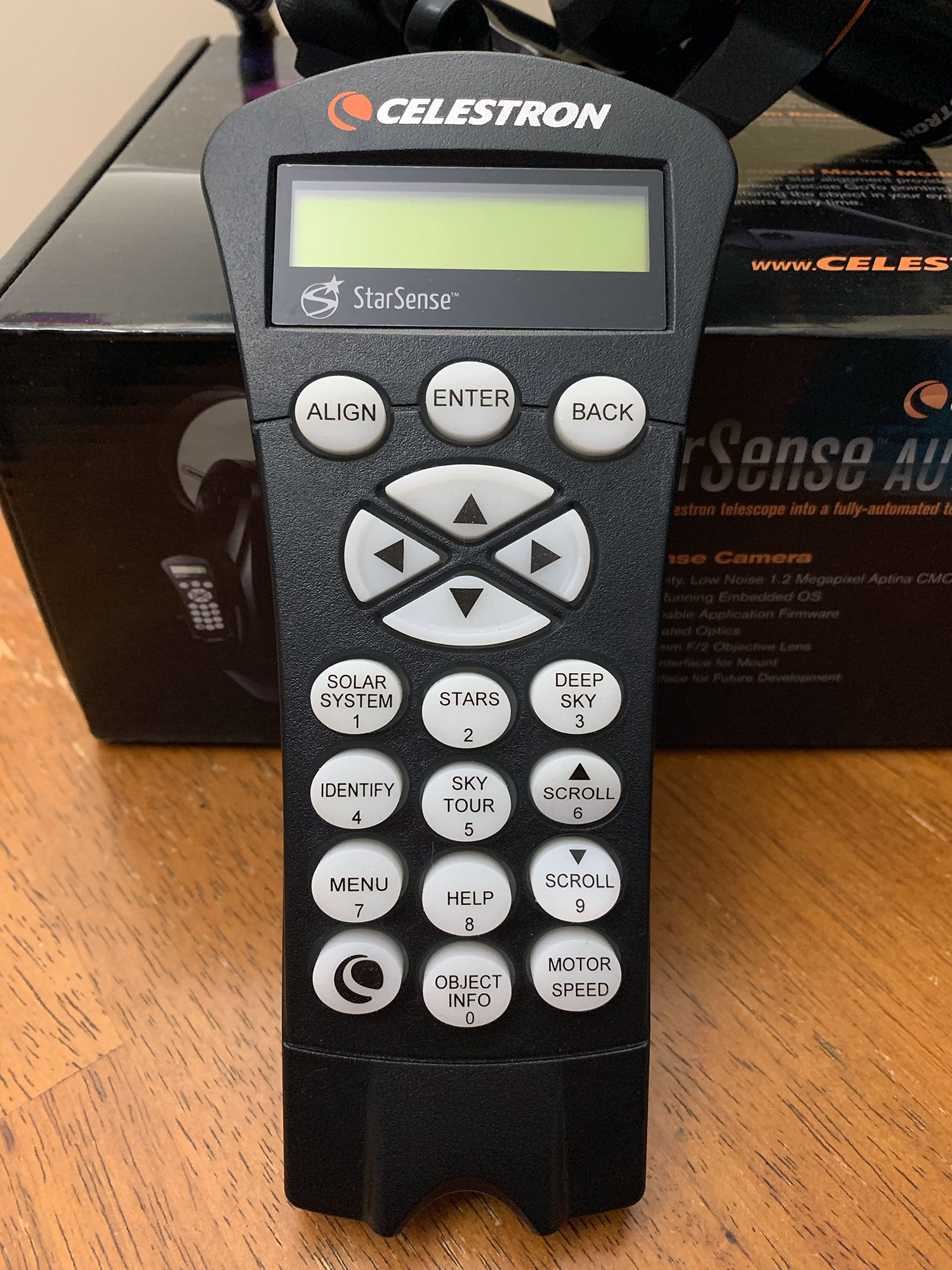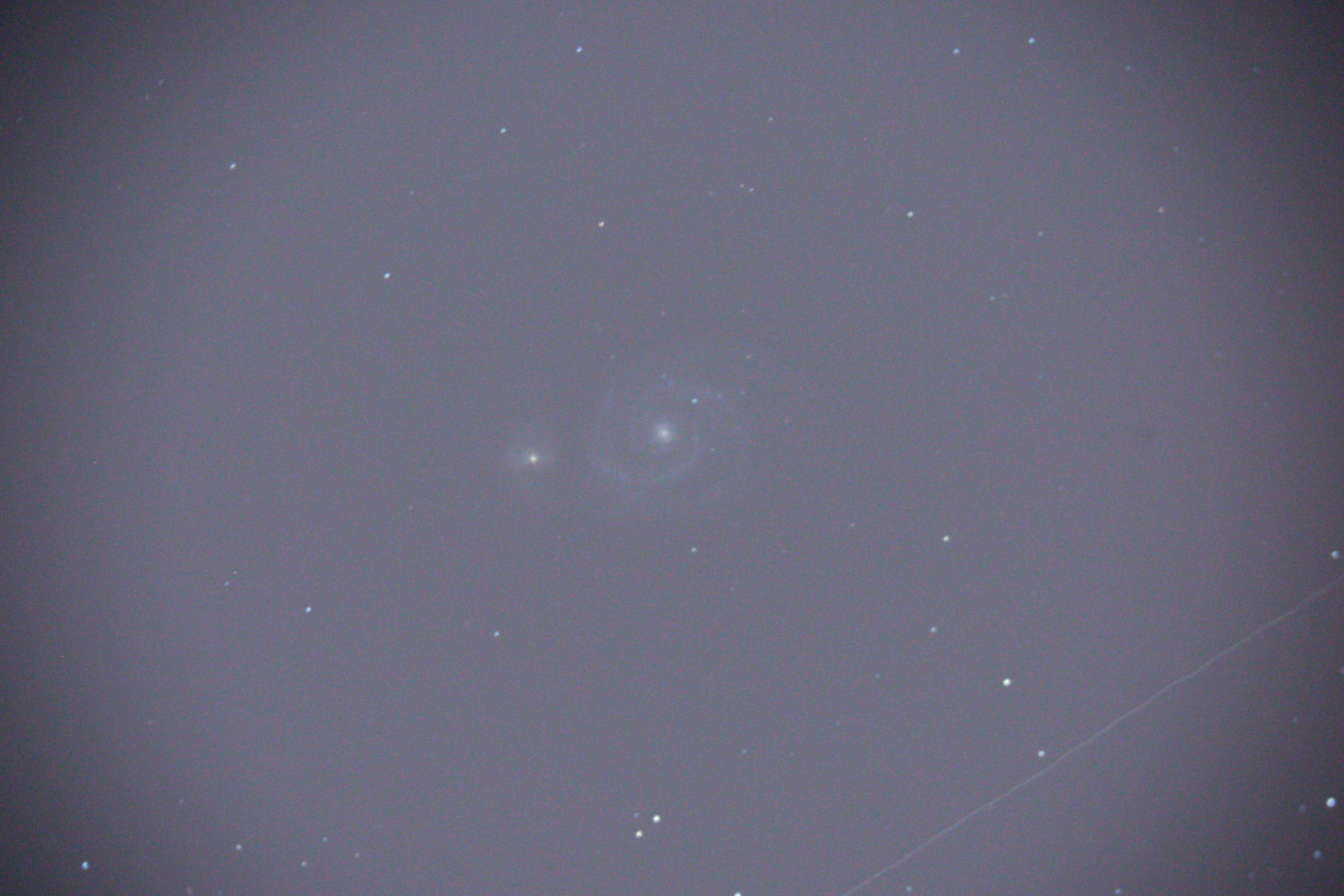StarSense Auto Align
I've been looking into options for improving my polar alignment and tracking during astrophotography, so as a first step I decided to get a Celestron StarSense Auto Align camera. I didn't want to jump all the way to a full auto-guide camera + laptop, so I figured this would be a good solution until my skills improved.
During my initial research I had read a lot of reviews where people were having problems using the StarSense but I had a hunch that a lot of it was just user error. The setup and usage instructions were pretty straight forward so I wasn't too nervous.
The camera arrived in a handsome and well packed box. It comes with a basic RJ-11 (phone jack) cable to connect to the AUX port on any compatible GOTO mount, along with both a large and small mounting plate to fit a variety of optical tubes. It also comes with an updated hand controller for the mount, from what I gather this is where a lot of the processing happens.


I had to take my optical view finder off the scope to make room for the StarSense. My Ultima 11" was built back in 1994, so I think the accessory mounts on it aren't quite to the current industry standards so I couldn't mount both the StarSense and piggyback mount at the same time.

The camera needs to be calibrated to the mount the first time you use it, but after that it should automatically align the scope by itself. Celestron has a very straightforward instructional video walking you through the process. While I found that to be very helpful, I still had a few stumbles out in the field.

After the monthly Fox Valley Astronomical Society meeting we setup for some casual observing in the parking lot. I used this opportunity to test out the StarSense to see how it worked. I had some stops and starts with getting everything aligned, but nothing major. I entered the time and date into the controller and let it do its initial scan then tried to calibrate to Sirius only to have it almost 40 degrees off.
I turned off the mount, re-centered it, and noticed that the altitude on my mount was off by almost 10°. Fixed that and tried again, only this time I forgot to enter the time and date, so when it tried to slew to Mars it was pointing pretty much at the ground. Hrmph. I reset everything again, and was extremely careful to follow the alignment and calibration procedure. I told it to auto align and it scanned the sky for about 2 minutes or so. I then selected a star to slew to. Again I chose Sirius and the mount put it almost dead center. I selected calibrate, chose Sirius as the instructions say to calibrate off the last star used, and then got it absolutely dead center in the camera.
After finishing the calibration I tried slewing to another target, this time Arcturus which was rapidly setting. I held my breath as it swung around and then stopped with it bang in the center of the frame. Slew to Capella, same result. Awesome! Now a tough one - The Whirlpool Galaxy. I have wanted to photograph deep sky objects for a long time but haven't had any luck yet. It slewed to where I knew it should be, but obviously it wouldn't show up on the camera until I tried a long exposure. I set it to bulb mode and went for a 60 second exposure right off the bat.

There it was. Faint, and only a single frame, but I had it dead to rights and I was tracking for at least 60 seconds at ISO 1600. Most brilliant photos of deep sky objects take multiple hours worth of exposures so I still have a long way to go, but I was incredibly happy to take that first step. I took about 10 minutes of exposures and went on to try Bode's Galaxy as well as The Pinwheel Galaxy just to make sure the mount was slewing and tracking well. When I have more time I'll get to spend an evening on one target. I can't wait.
As for the StarSense Auto Align camera, I'm very happy with it. The only problems I had were user errors and that was only during the initial setup. I think it's a bit expensive but it does exactly what it advertises. I plan on using this for the next year or so then next spring upgrading to a ZWO ASI Air + Auto Guide camera to actively track the mount without a laptop. I think the StarSense is very well suited for people who do a lot of visual astronomy, where as those of us who are more astro-imagers are better suited with a guide camera. I'm just not quite there yet, I still have a lot to learn.
Clear skies!